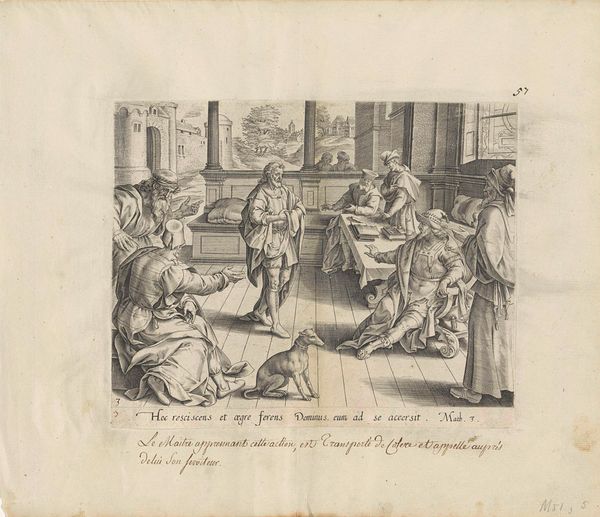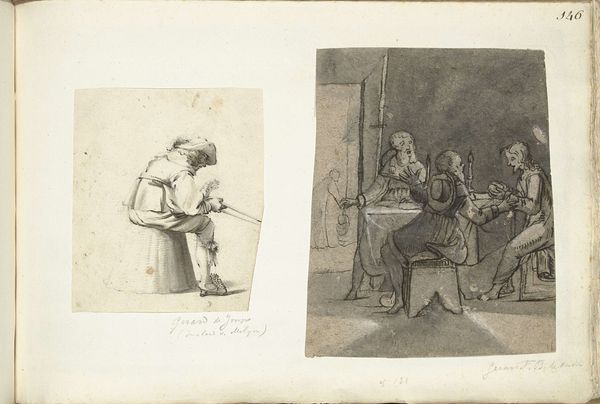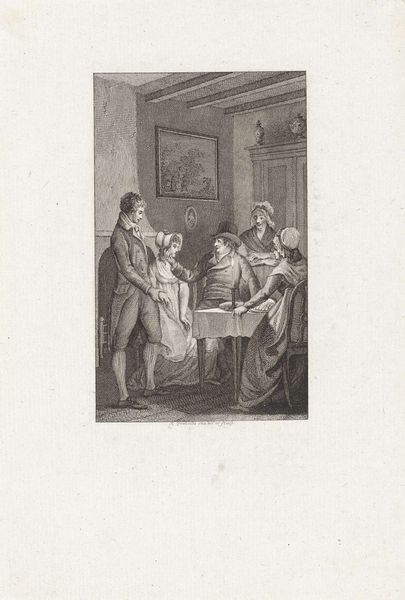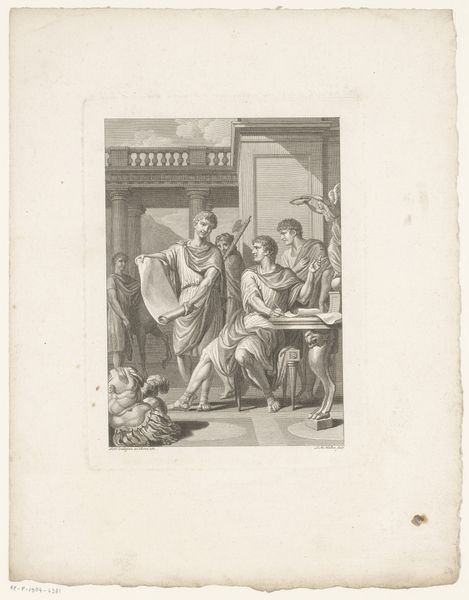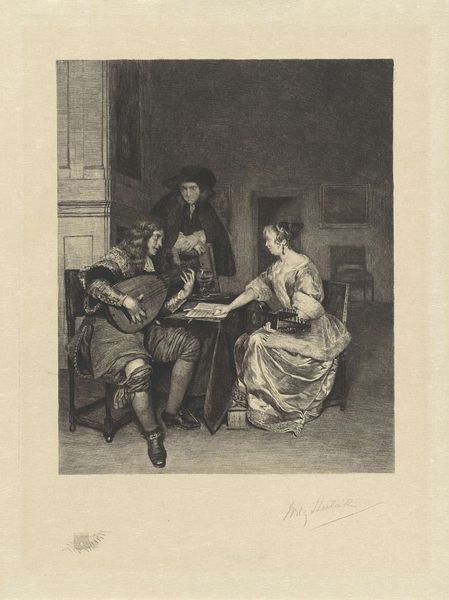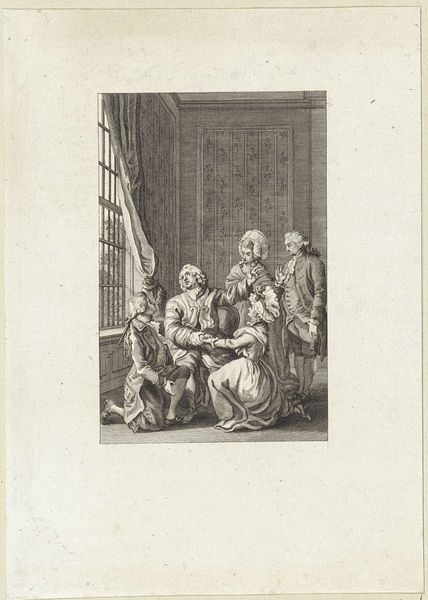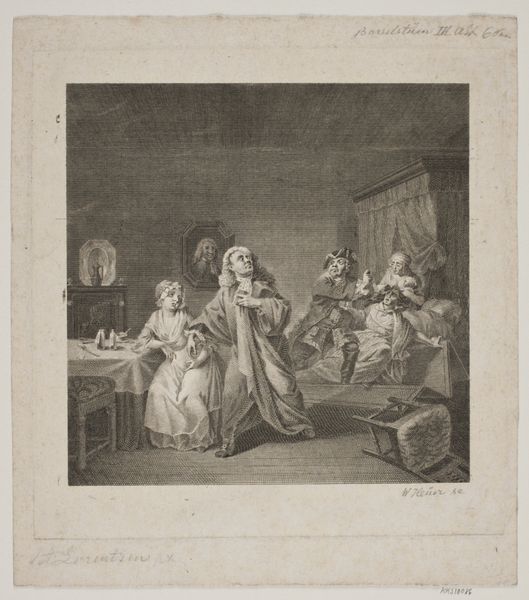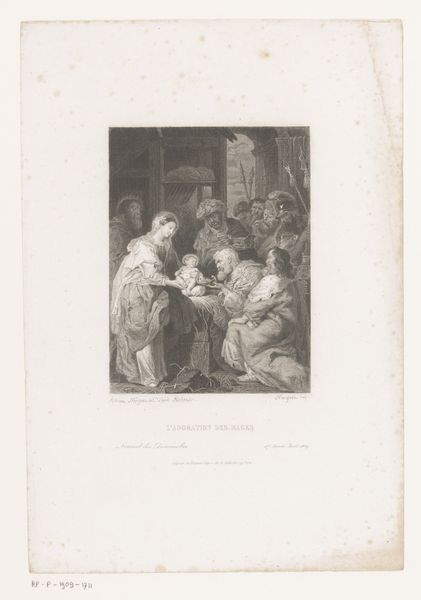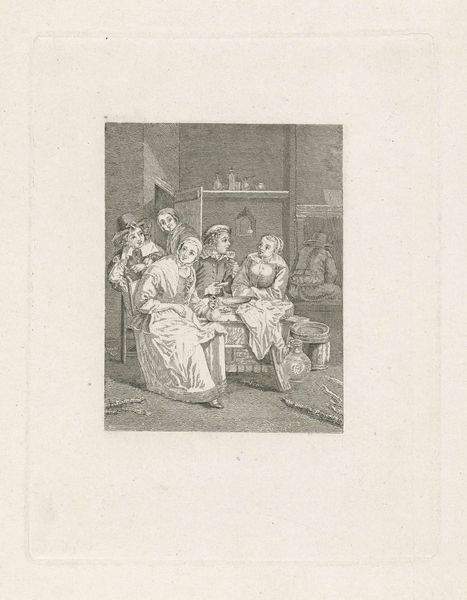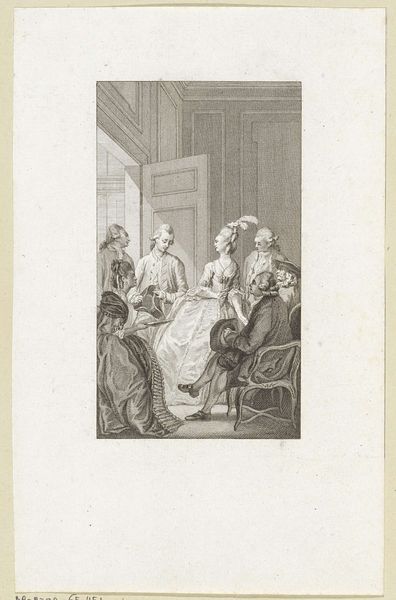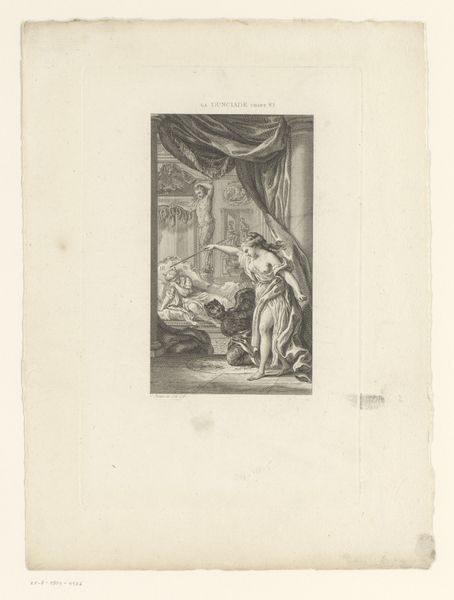
drawing, paper, ink
drawing
aged paper
toned paper
light pencil work
narrative-art
baroque
pencil sketch
figuration
paper
personal sketchbook
ink
ink drawing experimentation
sketchbook drawing
watercolour illustration
genre-painting
sketchbook art
watercolor
Dimensions: height 190 mm, width 150 mm, height 243 mm, width 360 mm
Copyright: Rijks Museum: Open Domain
Curator: "Maaltijd te Emmaüs," or "Supper at Emmaus," a drawing created around 1617 by Gerard ter Borch, currently residing in the Rijksmuseum. Editor: There's an incredible softness to the light and shadow here. The tonal gradations of the paper, combined with the delicate line work, create an ethereal feel. Curator: Indeed, Borch's rendering in ink and watercolor masterfully captures the pivotal biblical moment of the resurrected Christ revealing himself to two disciples during a meal. Observe how the halo subtly denotes Christ's divine presence. Editor: That halo, while faint, is powerful. It echoes the long tradition of using circular forms to denote divinity. More than that, it anchors the figures as representing holy bodies. I’m drawn to the central figure's reaction; the back is to us, making it like an invitation for us to also reflect upon the meaning. Curator: The composition itself directs our gaze. Borch utilizes the table as a horizontal anchor, while the arrangement of figures forms a pyramidal structure. It creates a sense of stability and balance that underscores the solemnity of the scene. Editor: Notice too the symbolic resonance of bread and wine, which are both physical objects present and potent metaphors central to Christian ritual, pointing to the eucharist as memorial. Curator: And that doorway in the background… it's not merely architectural, but functions almost as a portal to an unknown future or perhaps even the divine itself. Editor: It serves as a potent reminder that these symbolic moments can offer a transformative experience, echoing into eternity. The artist seems to emphasize the idea that divinity can appear where you least expect it. Curator: It's remarkable how Borch, through relatively simple means, constructs such a profound statement about faith, recognition, and spiritual awakening. Editor: The raw expressiveness of this artwork’s semiotic structure leaves me captivated. A fine moment from art history rendered in beautiful economy.
Comments
No comments
Be the first to comment and join the conversation on the ultimate creative platform.
